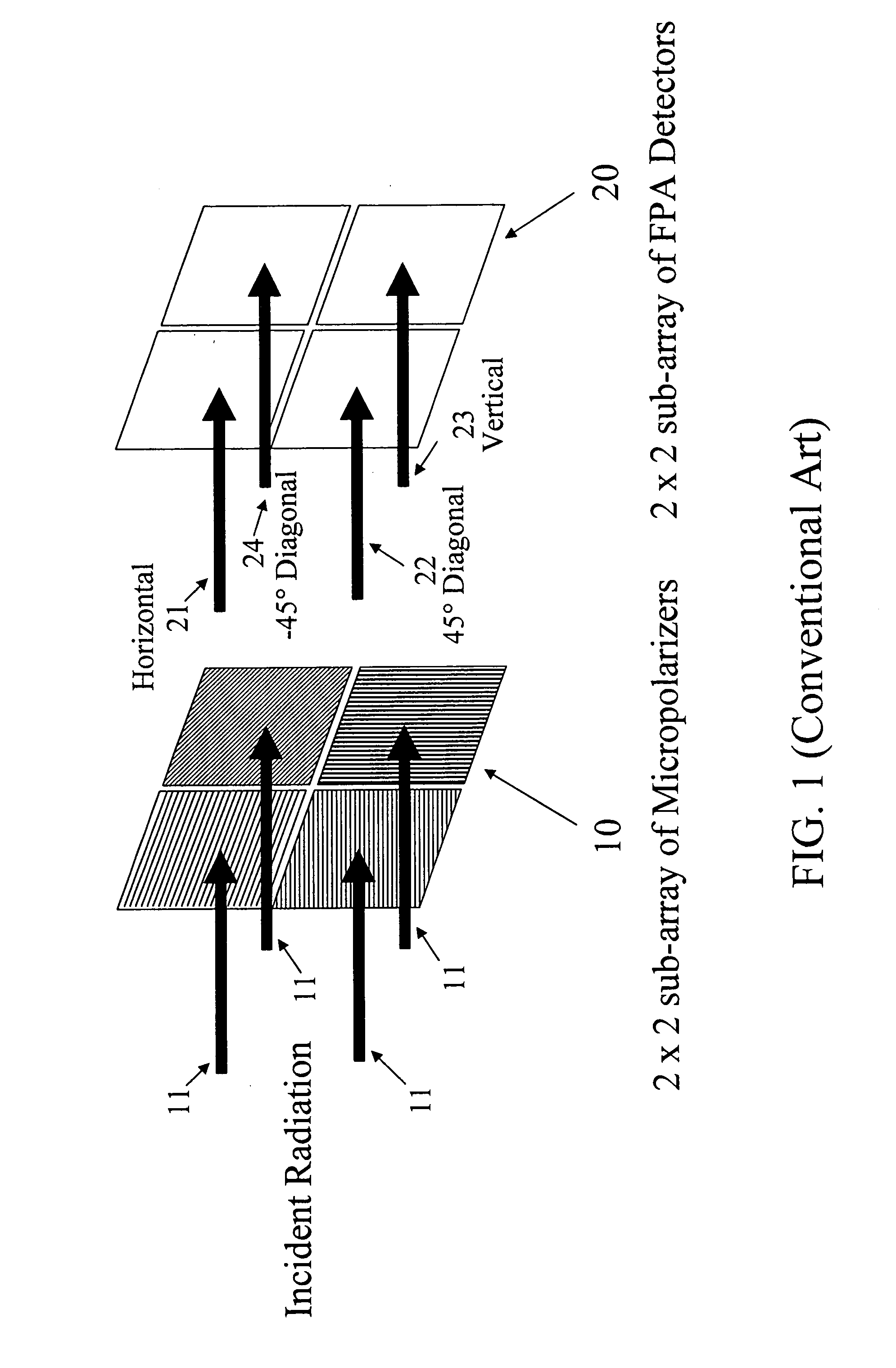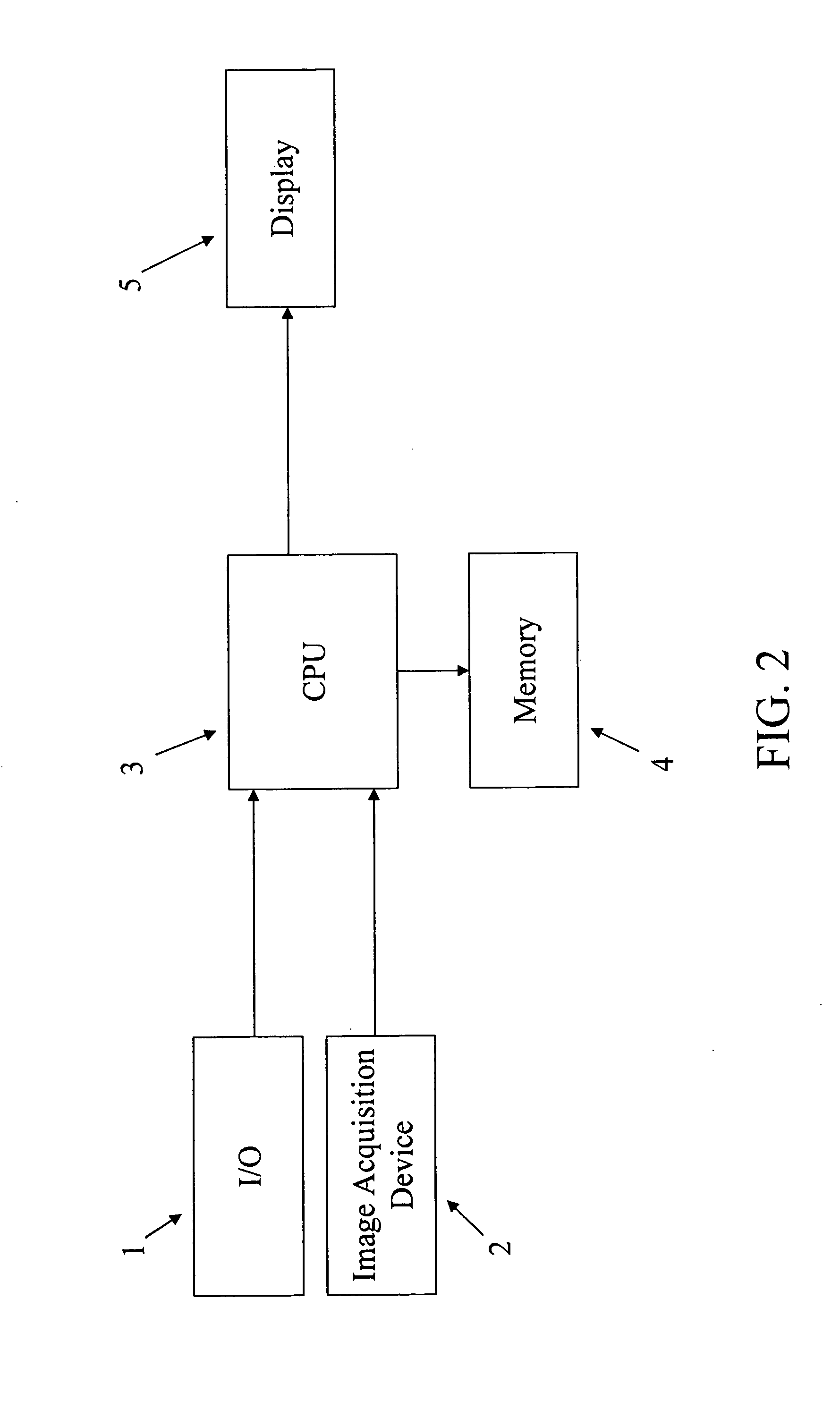Method for enhancing polarimeter systems that use micro-polarizers
- Summary
- Abstract
- Description
- Claims
- Application Information
AI Technical Summary
Benefits of technology
Problems solved by technology
Method used
Image
Examples
Embodiment Construction
[0028]The following detailed description of the invention refers to the accompanying drawings. The same reference numbers in different drawings identify the same or similar elements. Also, the following detailed description does not limit the invention. Instead, the scope of the invention is defined by the appended claims and equivalent thereof.
[0029]FIG. 2 illustrates a general purpose system that may be utilized to perform the methods and algorithms disclosed herein. The system shown in FIG. 2 includes an Input / Output (I / O) device 1, an image acquisition device 2, a Central Processing Unit (CPU) 3, a memory 4, and a display 5. This apparatus and particularly the CPU 3 may be specially constructed for the inventive purposes such as a programmed digital signal processor (DSP), an application specific integrated circuit (ASIC), a field programmable gate array (FPGA) or special purpose electronic circuit, or it may comprise a general-purpose computer selectively activated or reconfigu...
PUM
 Login to View More
Login to View More Abstract
Description
Claims
Application Information
 Login to View More
Login to View More - R&D
- Intellectual Property
- Life Sciences
- Materials
- Tech Scout
- Unparalleled Data Quality
- Higher Quality Content
- 60% Fewer Hallucinations
Browse by: Latest US Patents, China's latest patents, Technical Efficacy Thesaurus, Application Domain, Technology Topic, Popular Technical Reports.
© 2025 PatSnap. All rights reserved.Legal|Privacy policy|Modern Slavery Act Transparency Statement|Sitemap|About US| Contact US: help@patsnap.com



